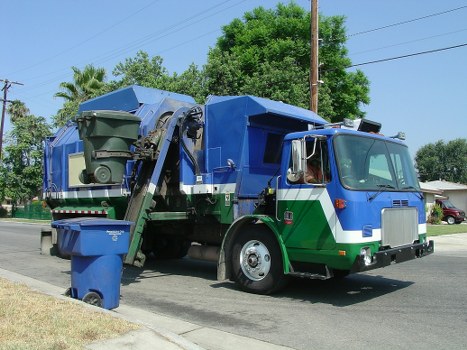Flat Clearance in Clearance Sucks: Navigating the Challenges

Flat clearance processes are integral to various industries, ensuring efficient movement of goods and services. However, many businesses find that flat clearance often falls short of expectations, leading to operational inefficiencies and increased costs. Understanding the underlying issues of flat clearance can help organizations implement better strategies and avoid the common pitfalls associated with clearance processes.
One of the primary challenges with flat clearance is the lack of flexibility it offers. In a rapidly changing market, businesses need clearance systems that can adapt to fluctuating demands and unexpected obstacles. Flat clearance systems, which typically operate on a rigid framework, often fail to provide the necessary adaptability, resulting in bottlenecks and delays.
Moreover, flat clearance can lead to poor resource allocation. Without a dynamic approach, resources may be underutilized or overextended, causing inefficiencies that directly impact the bottom line. This mismanagement not only affects productivity but also places a strain on employee morale and customer satisfaction.
The Impact of Flat Clearance on Operations

Flat clearance processes can significantly hinder operational efficiency. When clearance systems are not optimized, businesses may experience delays in product deliveries, increased lead times, and higher operational costs. These issues can cascade throughout the supply chain, affecting everything from inventory management to customer service.
In industries such as logistics and manufacturing, timely clearance is crucial. Flat clearance models that cannot accommodate sudden changes in demand or supply chain disruptions can lead to stockouts or overstock situations. Both scenarios are detrimental, leading to lost sales opportunities and increased holding costs.
Additionally, flat clearance often fails to incorporate advanced technologies that can streamline operations. Without leveraging tools like automation and data analytics, businesses miss out on opportunities to enhance their clearance processes, making them less competitive in the market.
Financial Implications of Inefficient Clearance

The financial repercussions of flat clearance are substantial. Inefficient clearance processes can lead to increased operational costs due to wasted resources and extended processing times. These costs can erode profit margins, making it difficult for businesses to invest in growth and innovation.
Moreover, delayed clearances can result in penalties and fines, especially in industries that are heavily regulated. Non-compliance with clearance regulations not only incurs financial losses but also damages the company's reputation, making it harder to attract and retain customers.
Proper clearance management is essential for maintaining healthy financials. By addressing the shortcomings of flat clearance, businesses can reduce unnecessary expenses and improve their financial stability.
Strategies for Improving Clearance Processes

To overcome the challenges associated with flat clearance, businesses should consider implementing more flexible and adaptive clearance systems. One effective strategy is to adopt a tiered clearance approach, which allows for different levels of clearance based on the complexity and urgency of the tasks at hand.
Another important strategy is to integrate advanced technologies into the clearance process. Automation tools can significantly reduce processing times, while data analytics can provide valuable insights into clearance performance, enabling continuous improvement.
Training and development are also crucial. Ensuring that employees are well-versed in efficient clearance practices can lead to more streamlined operations and reduce the likelihood of errors that can cause delays.
Leveraging Technology for Enhanced Clearance

Embracing technology is key to transforming flat clearance systems into more efficient processes. Implementing automated clearance systems can minimize human error, speed up processing times, and ensure that clearances are handled consistently and accurately.
Additionally, utilizing real-time tracking and monitoring tools allows businesses to gain visibility into their clearance operations. This visibility enables proactive management of potential issues, ensuring that delays are addressed before they escalate into significant problems.
Furthermore, integrating blockchain technology can enhance the security and transparency of clearance processes. By providing a tamper-proof ledger of transactions, blockchain ensures that all clearance activities are recorded accurately, reducing the risk of fraud and increasing trust among stakeholders.
Benefits of an Optimized Clearance System

Optimizing clearance systems can yield numerous benefits for businesses. Enhanced efficiency is one of the most significant advantages, as streamlined clearance processes reduce the time and resources required to move goods and services.
Improved customer satisfaction is another key benefit. Faster and more reliable clearance processes ensure that customers receive their orders promptly, fostering trust and loyalty. Satisfied customers are more likely to become repeat buyers and recommend your business to others.
Additionally, optimized clearance systems can lead to better financial performance. By reducing operational costs and minimizing delays, businesses can achieve higher profit margins and invest more in growth initiatives.
Enhancing Customer Experience Through Better Clearance

A well-managed clearance system directly contributes to an enhanced customer experience. Timely deliveries and accurate order fulfillment are critical components of customer satisfaction. When clearance processes are efficient, customers are more likely to receive their products on time, which builds trust and encourages repeat business.
Furthermore, clear communication about order status and potential delays can significantly impact customer perceptions. Providing real-time updates and transparent information helps manage customer expectations and reduces frustration when issues arise.
Offering flexible clearance options, such as expedited processing or customized delivery schedules, can also differentiate your business from competitors, attracting more customers who value convenience and reliability.
Reducing Costs Through Effective Clearance Management

Effective clearance management plays a crucial role in reducing costs for businesses. By minimizing unnecessary delays and optimizing resource allocation, companies can decrease operational expenses and improve overall efficiency.
Implementing just-in-time clearance processes ensures that goods are moved through the supply chain swiftly, reducing inventory holding costs and minimizing the risk of overstocking or stockouts.
Additionally, optimizing clearance routes and methods can lead to significant cost savings. By analyzing and selecting the most efficient pathways for goods movement, businesses can reduce transportation costs and improve delivery times.
Implementing Best Practices for Clearance

To achieve an effective clearance system, businesses should adopt industry best practices. This includes regularly reviewing and updating clearance procedures to ensure they align with current market conditions and regulatory requirements.
Collaboration with key stakeholders, such as suppliers, logistics providers, and regulatory agencies, is essential for creating a cohesive clearance strategy. Open communication and partnership can help identify and address potential challenges before they become major issues.
Investing in continuous improvement initiatives, such as Lean or Six Sigma methodologies, can also enhance clearance processes. These approaches focus on eliminating waste, reducing variability, and improving overall process efficiency.
Overcoming Common Clearance Challenges

Businesses often encounter various obstacles when managing clearance processes. Identifying and addressing these common challenges is essential for maintaining efficient operations and achieving long-term success.
One prevalent issue is regulatory compliance. Navigating the complex landscape of clearance regulations requires a thorough understanding of applicable laws and standards. Non-compliance can result in hefty fines, legal issues, and reputational damage.
Another challenge is managing peak demand periods. During times of high demand, clearance systems can become overwhelmed, leading to delays and errors. Implementing scalable clearance solutions that can handle increased workloads is crucial for maintaining performance during these periods.
Addressing Regulatory Compliance

Ensuring compliance with clearance regulations is a critical aspect of managing clearance processes. Businesses must stay informed about the latest regulatory changes and implement necessary adjustments to their clearance procedures.
Establishing a compliance team or appointing a dedicated compliance officer can help monitor regulatory requirements and ensure that clearance operations adhere to all applicable laws.
Regular training sessions for employees on compliance topics can also enhance awareness and reduce the risk of inadvertent violations that could disrupt clearance processes.
Managing Peak Demand Effectively

Peak demand periods can strain clearance systems, leading to delays and increased operational costs. To manage these periods effectively, businesses should implement scalable clearance solutions that can adjust to fluctuating workloads.
One approach is to utilize temporary workforce augmentation during peak times, ensuring that there are enough personnel to handle the increased clearance volume without compromising quality.
Additionally, optimizing scheduling and workflow management can help distribute the workload more evenly, preventing bottlenecks and maintaining clearance efficiency even during high-demand periods.
Leveraging Data for Clearance Optimization

Data-driven decision-making is essential for optimizing clearance processes. By collecting and analyzing data related to clearance performance, businesses can identify patterns, trends, and areas for improvement.
Implementing key performance indicators (KPIs) allows companies to measure the effectiveness of their clearance systems and track progress over time. KPIs such as clearance time, error rates, and cost per clearance provide valuable insights into operational efficiency.
Advanced analytics tools can further enhance data utilization by providing predictive insights and recommendations for process improvements, enabling proactive management of clearance operations.
Future Trends in Clearance Management

The landscape of clearance management is evolving, driven by technological advancements and changing market demands. Staying abreast of future trends can help businesses prepare for and adapt to these changes, ensuring continued efficiency in their clearance processes.
One significant trend is the increased adoption of artificial intelligence (AI) and machine learning in clearance operations. These technologies can automate routine tasks, predict clearance bottlenecks, and optimize decision-making processes.
Another emerging trend is the integration of Internet of Things (IoT) devices in clearance management. IoT devices can provide real-time data on the movement and status of goods, enhancing visibility and enabling more responsive clearance processes.
Embracing Automation and AI

Automation and AI are revolutionizing clearance management by introducing higher levels of efficiency and accuracy. Automated clearance systems can handle repetitive tasks with minimal human intervention, reducing the potential for errors and speeding up processing times.
AI-powered algorithms can analyze vast amounts of data to optimize clearance workflows, predict potential disruptions, and suggest proactive measures to prevent delays.
By leveraging AI and automation, businesses can achieve a more responsive and resilient clearance system that can adapt to changing demands and operational challenges.
Integrating IoT for Enhanced Visibility

The integration of IoT devices into clearance management provides unparalleled visibility into the movement and status of goods. Sensors and connected devices can track shipments in real-time, offering detailed insights into each stage of the clearance process.
This real-time data allows businesses to monitor clearance operations closely, identify potential issues before they escalate, and make informed decisions to enhance efficiency.
Furthermore, IoT integration facilitates better inventory management by providing accurate and up-to-date information on stock levels and movement patterns, ensuring that clearance processes are well-coordinated with inventory needs.
Adopting Blockchain for Transparent Clearance

Blockchain technology offers a secure and transparent way to manage clearance processes. By creating an immutable ledger of all clearance transactions, blockchain ensures that all activities are recorded accurately and cannot be tampered with.
This transparency enhances trust among all stakeholders involved in the clearance process, from suppliers and logistics providers to regulatory authorities and customers.
Moreover, blockchain can streamline clearance operations by automating verification and validation steps, reducing the time and effort required to manage documentation and compliance.
Conclusion: Transforming Clearance for Better Outcomes

Flat clearance systems, while foundational, often present significant challenges that can hinder business operations and growth. By recognizing the limitations of flat clearance and implementing strategic improvements, businesses can transform their clearance processes into more efficient, flexible, and cost-effective systems.
Embracing advanced technologies, adopting best practices, and continuously monitoring and optimizing clearance operations are essential steps toward achieving better outcomes. These efforts not only enhance operational efficiency but also improve customer satisfaction and financial performance.
Don't let flat clearance hold your business back. **Contact us today** to explore tailored solutions that can revolutionize your clearance processes and drive your business forward.
- Flexible clearance systems adapt to market changes.
- Advanced technologies streamline clearance operations.
- Effective clearance management reduces costs and enhances efficiency.
- Optimized clearance improves customer satisfaction and trust.
- Future trends like AI and IoT are shaping the future of clearance management.
Ready to overcome the challenges of flat clearance? **Book your service now** and take the first step towards a more efficient and profitable clearance system.